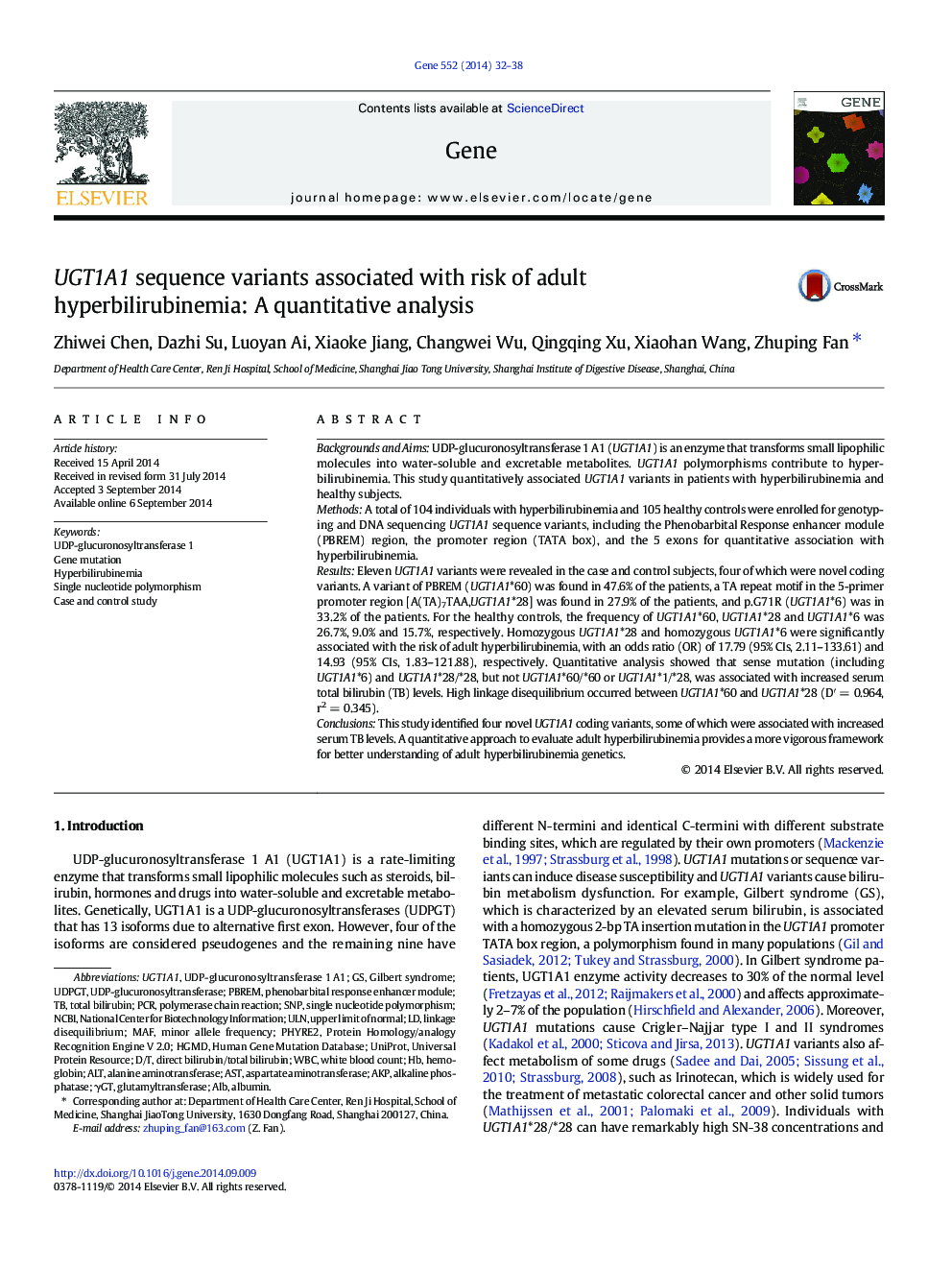| Article ID | Journal | Published Year | Pages | File Type |
|---|---|---|---|---|
| 2816116 | Gene | 2014 | 7 Pages |
•It is a novel quantitative approach about UGT1A1 SNPs and adult hyperbilirubinemia.•We find four novel sense mutations of UGT1A1.•We unveil the genetic fabrics of adult hyperbilirubinemia in Shanghai, China.
Backgrounds and AimsUDP-glucuronosyltransferase 1 A1 (UGT1A1) is an enzyme that transforms small lipophilic molecules into water-soluble and excretable metabolites. UGT1A1 polymorphisms contribute to hyperbilirubinemia. This study quantitatively associated UGT1A1 variants in patients with hyperbilirubinemia and healthy subjects.MethodsA total of 104 individuals with hyperbilirubinemia and 105 healthy controls were enrolled for genotyping and DNA sequencing UGT1A1 sequence variants, including the Phenobarbital Response enhancer module (PBREM) region, the promoter region (TATA box), and the 5 exons for quantitative association with hyperbilirubinemia.ResultsEleven UGT1A1 variants were revealed in the case and control subjects, four of which were novel coding variants. A variant of PBREM (UGT1A1*60) was found in 47.6% of the patients, a TA repeat motif in the 5-primer promoter region [A(TA)7TAA,UGT1A1*28] was found in 27.9% of the patients, and p.G71R (UGT1A1*6) was in 33.2% of the patients. For the healthy controls, the frequency of UGT1A1*60, UGT1A1*28 and UGT1A1*6 was 26.7%, 9.0% and 15.7%, respectively. Homozygous UGT1A1*28 and homozygous UGT1A1*6 were significantly associated with the risk of adult hyperbilirubinemia, with an odds ratio (OR) of 17.79 (95% CIs, 2.11–133.61) and 14.93 (95% CIs, 1.83–121.88), respectively. Quantitative analysis showed that sense mutation (including UGT1A1*6) and UGT1A1*28/*28, but not UGT1A1*60/*60 or UGT1A1*1/*28, was associated with increased serum total bilirubin (TB) levels. High linkage disequilibrium occurred between UGT1A1*60 and UGT1A1*28 (D′ = 0.964, r2 = 0.345).ConclusionsThis study identified four novel UGT1A1 coding variants, some of which were associated with increased serum TB levels. A quantitative approach to evaluate adult hyperbilirubinemia provides a more vigorous framework for better understanding of adult hyperbilirubinemia genetics.
